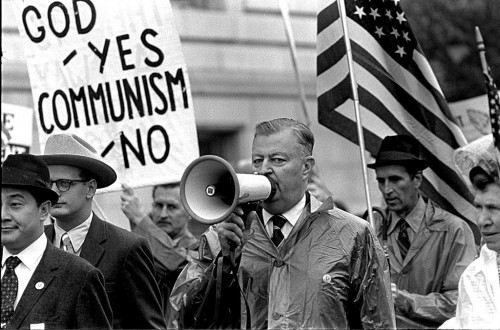 Glenn Beck and his “Restoring Honor” rally, held on the same stage where Dr. Martin Luther King delivered his “I Have a Dream” speech 47 years to the day, takes me back to an earlier conservative firebrand, Carl McIntire.
Glenn Beck and his “Restoring Honor” rally, held on the same stage where Dr. Martin Luther King delivered his “I Have a Dream” speech 47 years to the day, takes me back to an earlier conservative firebrand, Carl McIntire.
[Editor’s note: in case the search engines bring in some folks who don’t normally hang out here, this is a non-political blog dealing with coming of age in a small town in the Midwest in the 60s. Freedom of the Press belongs to he who has one, so I reserve the right to close out comments that produce more heat than light. I’m departing from normal Cape content just because I like some of these pictures and they’re topical.]
How we ended up at a Pro-Viet Nam War march
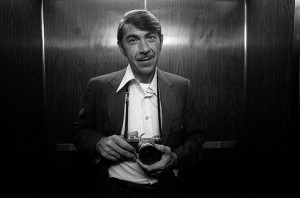 I was working as chief photographer for The Gastonia (N.C.) Gazette in the early 70s. When I took the job, I was in my early 20s (VERY early 20s) and wasn’t sure how I was going to deal with a inheriting a staff that had a photographer on it who was more than twice my age and had had no formal training.
I was working as chief photographer for The Gastonia (N.C.) Gazette in the early 70s. When I took the job, I was in my early 20s (VERY early 20s) and wasn’t sure how I was going to deal with a inheriting a staff that had a photographer on it who was more than twice my age and had had no formal training.
As it turned out, Kermit not only didn’t resent some young Yankee whippersnapper coming in, he welcomed the chance to learn new skills. As a reward, I took him with me to a photojournalism conference in Washington, D.C. I don’t think either of us had been to D.C. before, so we were pretty much the tourists.
I spotted a newspaper story that said that some preacher named Carl McIntire was going to lead a Pro-Viet Nam “Victory March” down to the Capitol. I had covered plenty of anti-war protests, so I thought this would be a change, and definitely a new experience for Kermit.
The Washington March started in the rain
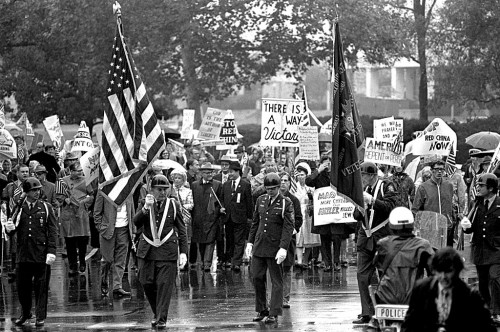 October 24, 1971, was a chilly, rainy, miserable day for a demonstration, but a fair number of people showed up to march. McIntire organized about half of dozen of these marches in the early 70s. One account said that as many as 14,000 people showed up for one of them. This one might have attracted a couple thousand, at most.
October 24, 1971, was a chilly, rainy, miserable day for a demonstration, but a fair number of people showed up to march. McIntire organized about half of dozen of these marches in the early 70s. One account said that as many as 14,000 people showed up for one of them. This one might have attracted a couple thousand, at most.
Harry Britton, Husband’s Lib advocate
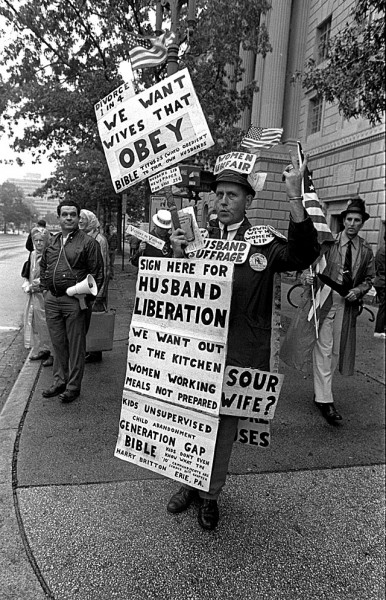 To be fair, Harry Britton of Erie, PA, wasn’t actually part of the march; he was just along the route. New York Magazine wrote that he was a fixture who had been supporting himself wearing placards, carrying signs and selling his leaflets for 25 cents each for several years. “Harry makes only $2,000 a year. He’s not in this for the money, though; he says his only goal is reconciliation with his wife, from whom he is, not surprisingly, separated.”
To be fair, Harry Britton of Erie, PA, wasn’t actually part of the march; he was just along the route. New York Magazine wrote that he was a fixture who had been supporting himself wearing placards, carrying signs and selling his leaflets for 25 cents each for several years. “Harry makes only $2,000 a year. He’s not in this for the money, though; he says his only goal is reconciliation with his wife, from whom he is, not surprisingly, separated.”
Another account said he was the “president (and probably sole member) of the National Association of Dissatisfied Husbands subsisting on sales of publications extolling ‘Husband Lib.(‘It’s not men’s lib,it’s Husband Lib. The Bachelors are not oppressed yet’).”
Civility in Protest
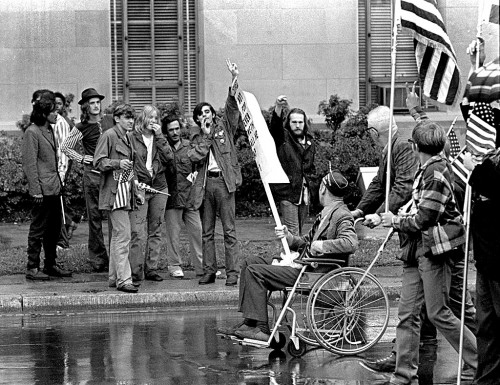 I was surprised to see the reaction of the boy carrying the flag next to the man in the wheelchair. When he passed the local hippie contingent, dressed in the standard uniform of army surplus clothing, he answered their peace sign with one of his own. Yep, BOTH fingers are showing.
I was surprised to see the reaction of the boy carrying the flag next to the man in the wheelchair. When he passed the local hippie contingent, dressed in the standard uniform of army surplus clothing, he answered their peace sign with one of his own. Yep, BOTH fingers are showing.
McIntire: “Fundamentalist with a flair”
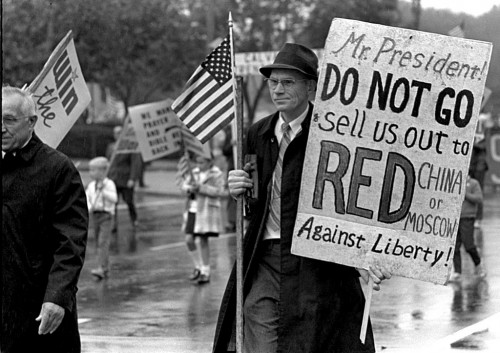 Many of the marchers were protesting President Nixon’s overtures to the Chinese.
Many of the marchers were protesting President Nixon’s overtures to the Chinese.
Christianity Today described Carl McIntire as a “fundamentalist with a flair.”
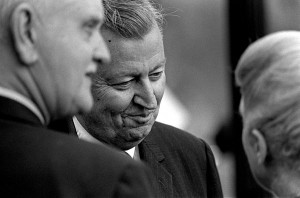 The story continued, “Throughout his career, McIntire was a tireless crusader against communists, whom he suspected of lurking everywhere, from mainline Protestantism to the Public Broadcasting System (PBS); he cooperated with the staff of Senator Joseph McCarthy in the late 1940s and early 1950s. Over the years, McIntire expanded his list of enemies to include Billy Graham, Oral Roberts, Martin Luther King Jr., antiwar protesters, feminists, the U.S. Postal Service, and the Revised Standard Version of the Bible, among many others.”
The story continued, “Throughout his career, McIntire was a tireless crusader against communists, whom he suspected of lurking everywhere, from mainline Protestantism to the Public Broadcasting System (PBS); he cooperated with the staff of Senator Joseph McCarthy in the late 1940s and early 1950s. Over the years, McIntire expanded his list of enemies to include Billy Graham, Oral Roberts, Martin Luther King Jr., antiwar protesters, feminists, the U.S. Postal Service, and the Revised Standard Version of the Bible, among many others.”
McIntire challenged Fairness Doctrine
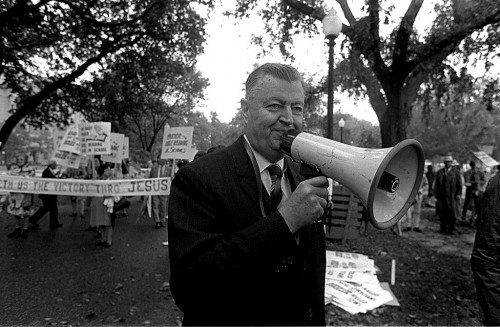 Never one to run from a fight, McIntire ran afoul of the FCC’s Fairness Doctrine when he refused to allow dissenting views to run on his radio show, The Twentieth Century Reformation Hour. The program was heard on as many as 600 stations (depending on your source).
Never one to run from a fight, McIntire ran afoul of the FCC’s Fairness Doctrine when he refused to allow dissenting views to run on his radio show, The Twentieth Century Reformation Hour. The program was heard on as many as 600 stations (depending on your source).
When the FCC refused to renew McIntire’s radio station license in 1973, he came up with Plan B. He fitted a wooden World War II era mine sweeper with a radio transmitter and sailed it out beyond the three-mile limit near Cape May.
Radio Free America
“Radio Free America” broadcast for just ten hours. He was shut down because he was interfering with a commercial radio station on an adjacent frequency. (A more interesting version has the broadcast coming to end end because the overheated antenna feed line started to catch the wooden vessel on fire.)
This is a man who doesn’t Tweet
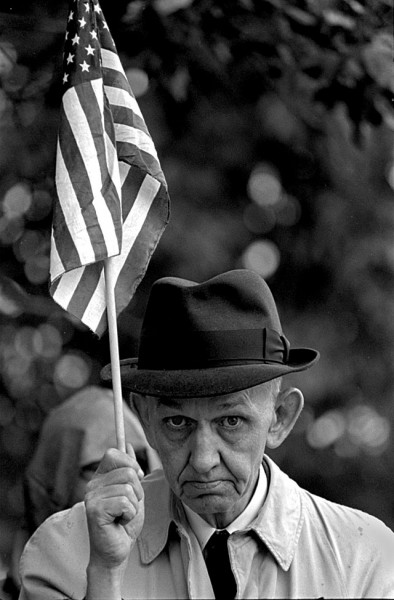 Shooting photos of strange-looking people at demonstrations is like shooting fish in a barrel. I would rather photograph someone with substance, like this man. (That’s not to say that I didn’t include some rather odd-looking folks in the gallery.)
Shooting photos of strange-looking people at demonstrations is like shooting fish in a barrel. I would rather photograph someone with substance, like this man. (That’s not to say that I didn’t include some rather odd-looking folks in the gallery.)
I’ve always liked the quiet dignity projected by this man. I don’t know what his beliefs were, and I am not sure if I’d agree with them, but I respected the calm way he returned my gaze.
Blacks marching for prayer in school
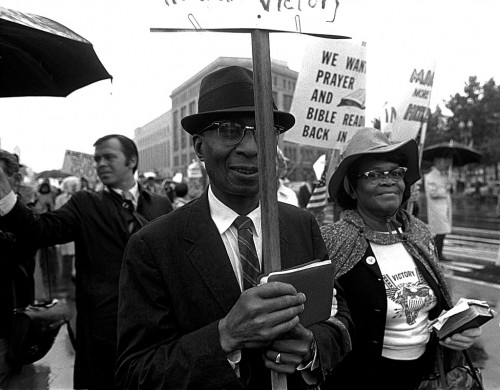 Most of the participants were white, older folks, but a number of blacks marched to support prayer and Bible reading in school.
Most of the participants were white, older folks, but a number of blacks marched to support prayer and Bible reading in school.
Whites oppose “bussing”
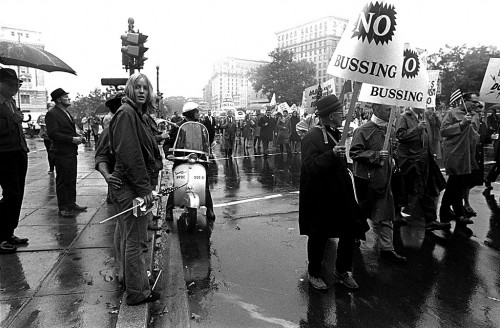 McIntire opposed the civil rights movement. His supporters carried signs opposing “bussing.” That’s a little confusing, because “busing” is when you put students on a bus to take them to school. “Bussing” is kissing, according to the AP Stylebook.
McIntire opposed the civil rights movement. His supporters carried signs opposing “bussing.” That’s a little confusing, because “busing” is when you put students on a bus to take them to school. “Bussing” is kissing, according to the AP Stylebook.
So, I’m not sure if they are opposing kissing (likely) or a transportation system (also likely).
Capitol makes picture-perfect background
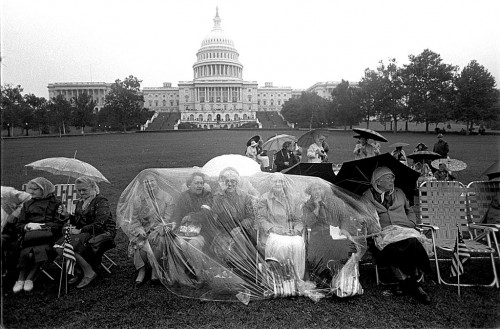 These folks were prepared for bad weather. I like the friendly wave from the woman in the middle.
These folks were prepared for bad weather. I like the friendly wave from the woman in the middle.
Then, the Victory March was over
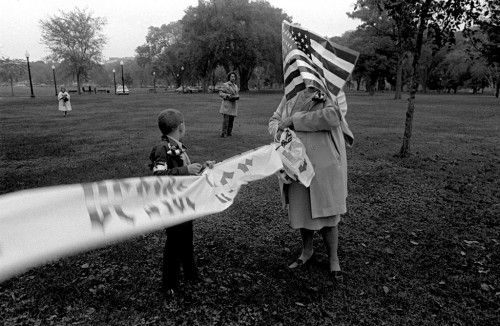 McIntire continued to hold his Victory Marches until 1972.
McIntire continued to hold his Victory Marches until 1972.
On April 30, 1975, at 8:35 a.m., the last Americans, ten Marines from the embassy, departed Saigon, concluding the U.S. presence in Vietnam.
King to McIntire to Beck
What do Martin Luther King, Carl McIntire and Glenn Beck have in common?
They all have the right to say their piece in the shadow of Abraham Lincoln.
Washington Memorial
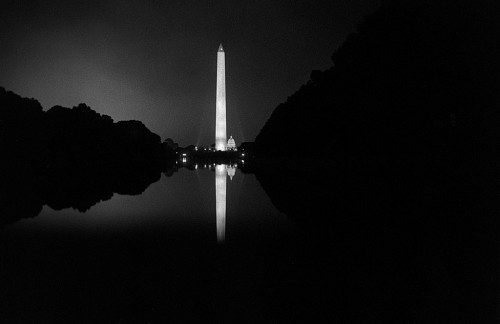 Victory March Photo Gallery
Victory March Photo Gallery
I tried to treat everyone with respect, even if I found their views repugnant. I hope that comes across in this photo gallery. Click on any image to make it larger, then click on the left or right side to move through the gallery.

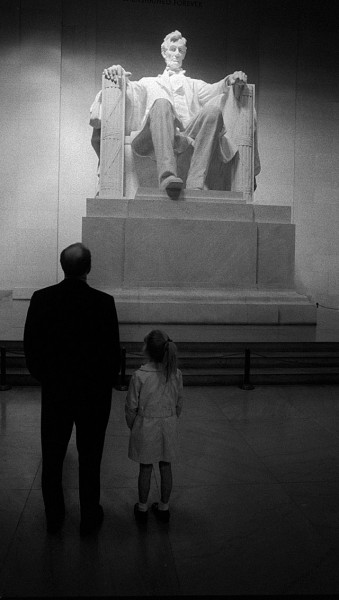
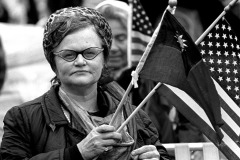
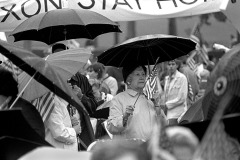
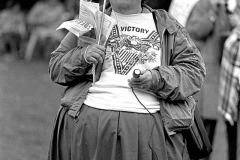
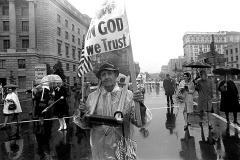
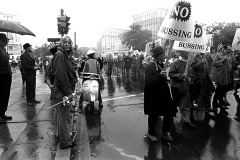
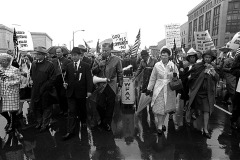
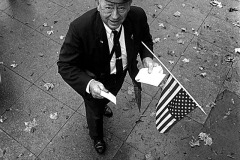
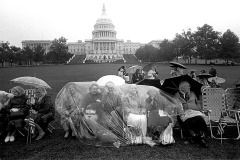
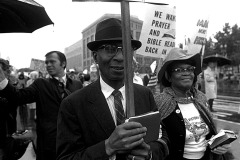
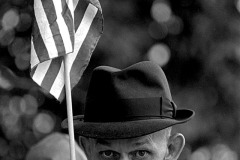
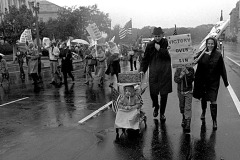
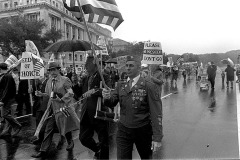
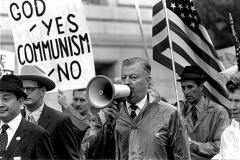
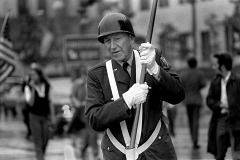
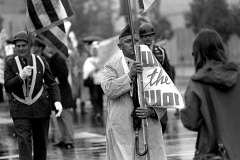
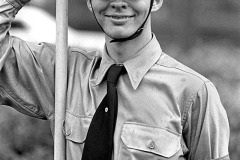
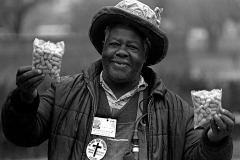
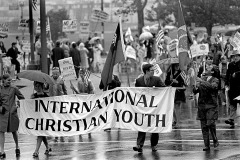
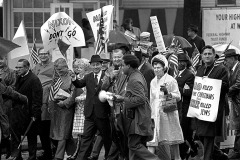
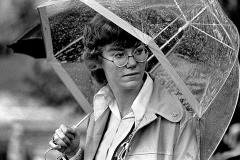
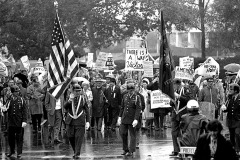
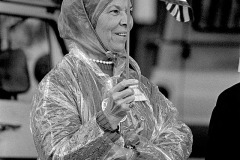
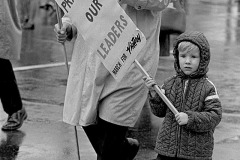
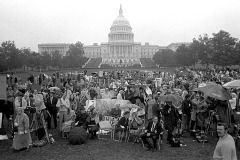
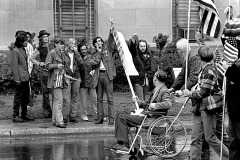
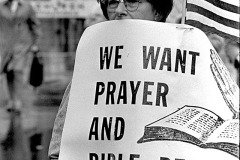
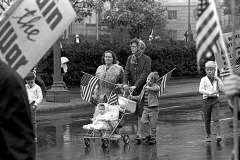
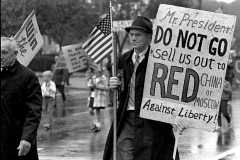
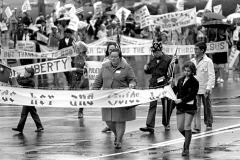
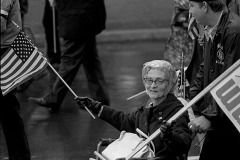
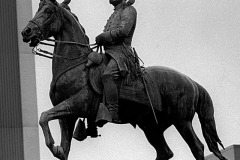
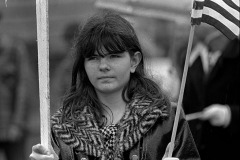
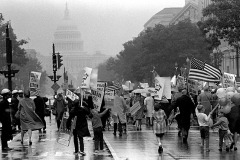
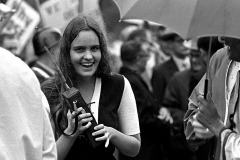
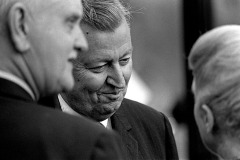
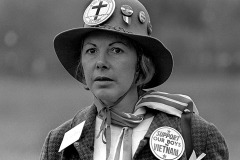
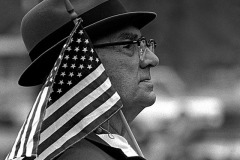
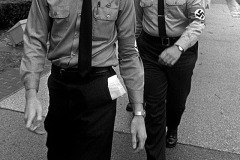
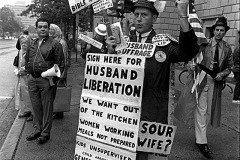
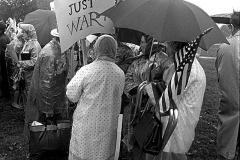
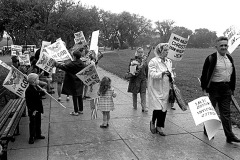
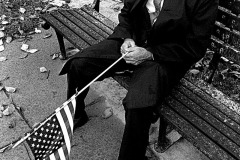
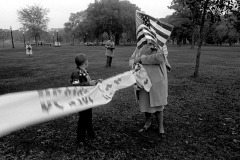
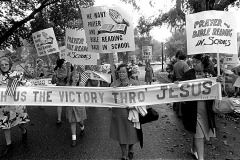
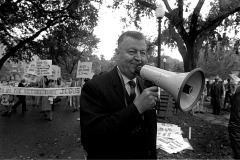
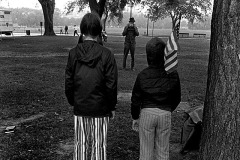
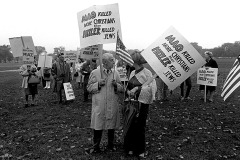
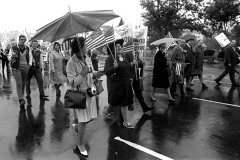
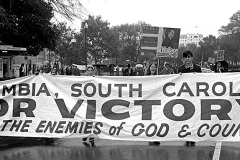
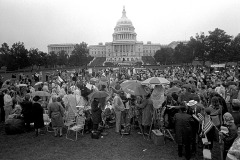
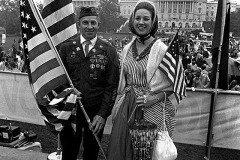
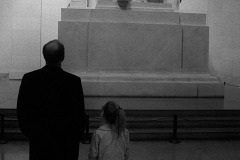
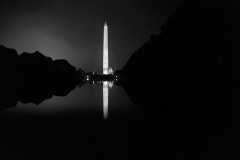
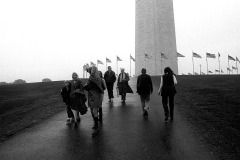
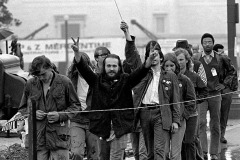
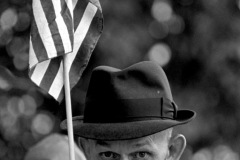
Ken!!
Awesome photos! What a great comparison to Glenn Beck’s event.
It is a good reminder of the rich and diverse history of political and social protest we have the freedom to enjoy.
Susan ’70
I remember getting out of school to go to the town Plaza to see Bobby Kennedy give a Speech. That was a big event.
I never know what you are going to post, but this was very educational. My generation has been taught about the anti-war protests but we were never exposed to this side of the debate.
So often with the pictures from demonstrations, we see the nuts and loons. I love how you captured the calm old man. Every demonstration I’ve been at has so many like him.
Explain to me how a Midwestern kid from Missouri could ever be considered a ‘Yankee’. Whippersnapper, sure. Yankee? Better check your sociogeographic encyclopedia.
Cheers,
Matt
Cape is the last snatch of civilization before you get into the Bootheel, which is The South. Once you descend the Benton Hills into the flats, you have left progressive thinking behind.
Because Cape is in Missouri, a border state in the Civil War, I’ve had to search for my geographical identify.
When I went to Ohio, I thought I was going to an Eastern school. People in Ohio classified me as a southerner.
When I moved to N.C,, there was no doubt that I was a Yankee in comparison. The state was going through the agony of school desegregation and we had two rival Klaverns of the Ku Klux Klan in the county. This “outside agitator” got rid of his Ohio tags in a hurry.
I’ve told the story about how Kermit sized me up: “I’ve figured out the difference between Southerners and Yankees. We write letters. You make phone calls.”
It wasn’t until I moved to Florida that I discovered that I was a Midwesterner.
It’s an identity that has served me well over the years. A Swampeast Missouri drawl can slide over into redneck cracker or it can gentrify up to “proper” English if the occasion calls for it.
Nice stuff. I remember shooting that stuff. It was a long time ago.
Why the hell aren’t we shooting that stuff now?
Keef,
I imagine it’s still being shot. There are still photographers out there.
After my buddy Kermit and I went to Washington and stumbled onto this march, we ended up doing a page of photos for The Gastonia Gazette. I doubt if more than four or five of them made print, along with, maybe, two grafs of copy.
Now that electrons are nearly free, I was able to run 56 pictures and put the event into a historical context. I knew Carl McIntire’s name in 1971, but I certainly didn’t know of his colorful past and couldn’t see into the future to see him being a leader in the Christian Right.
I shot these photos as a photographic finger exercise, not ever dreaming that I’d dredge them up four decades later for you to see.
An incredible group of photos. It reminds me what photojournalism was once. You are right, there are people doing stuff like this now, it’s just that it’s relegated to fringe publications and under-visited websites. You should be really proud of this.
Thanks, Bob. I respect your opinion.
Events like these are like shooting fish in a barrel. I don’t know how you could keep from making good photos.
What I was striving for was to take photographs of folks who had many viewpoints I opposed without that showing up in the pictures. I like to think I treated everyone I shot with dignity and respect, even the guys dressed up as Nazis.
For some additional factual information from an eyewitness participant in the McIntire organization and its protest events, the first “March for Victory” held April 4, 1970 garnered several tens of thousands of people from throughout the U.S, possibly as many as 100,000, though the media virtually ignored the event. The same was true for the second march held Oct. 3 the same year. As the marches became repetitive and their novelty wore off, fewer attended each time. This coincided with a decline in McIntire’s organization beginning in 1971 after his college moved from NJ to FL. Nevertheless, photographic evidence of the extent of these first events is still available.
The Gastonia (NC) Gazette covered it, even if it was by accident.
And, 40 years later, they are being resurrected. McIntire was an interesting footnote in American history.
Thanks for reminding me of this again Ken. I enjoyed it even more the second time around!
We’re getting to the age that it’s hard to remember what we’ve seen before.
NPR had a fascinating piece on memory and how it works this morning. I just wish I could remember what it said.
Hi Ken,
Great pictures from the Washington March in the 70s. Can you please send me your email? I would like to talk to you about reproducing one of your photos in the Baptist Bulletin magazine for an article about Carl McIntire. Thanks, Darrell Goemaat.
Hello,
I work at Oxford University Press and I would like to discuss the possibility of using one of your photos on the cover of a forthcoming book about Carl McIntire. If you are interested, please send me an email at oup90595@gmail.com.
Thank you!
Marcela
These incredible photos have become an integral part of my visual bible for a movie I’m working on about Madalyn Murray O’Hair. I don’t suppose there was a movie camera there that day? Or some television news?
You asked about television – You can see the coverage I shot of this demonstration using small-format video here: https://digdc.dclibrary.org/islandora/object/dcplislandora%3A314791
Hello,
I’m Yekyung Joo, a book editor in Korea.
I’d like to know if I can use 2-3 of them in a book I’m editing now, and also what is required if I can use them.
The book is about 21 persons of 20th century who had impact on making world-Christianity, including McIntire, who strongly influenced the division of Korean churches.
I’m joining this project by a Christian publishing house 복있는사람(means ‘the Blessed’) as a freelancer, and the author of this book is Jaekeun Lee, a professor of Christian history in Kwangshin University, Korea.
I’ve sent you a message on Facebook few hours ago.
Looking forward to your reply 🙂
Thank you!
I will send you an email.
My family was in one of those marches for victory in Vietnam. I think it was the one on October 3, 1970. My brother and I were wearing those white sweatshirts. We were near the back end of the parade. We had to get the police to turn away some Nazis who tried to join the tail end of our parade. We marched down Pennsylvania Avenue. Seemed like a lot of people. But I was a little kid. We listened to Carl McIntyre a lot at home. My father recently told me that if he had known then what he knows now about the Vietnam War, he would not have taken us to that march.
The march I covered was later in October of that year. I think you’re the first person who has commented that they were there.